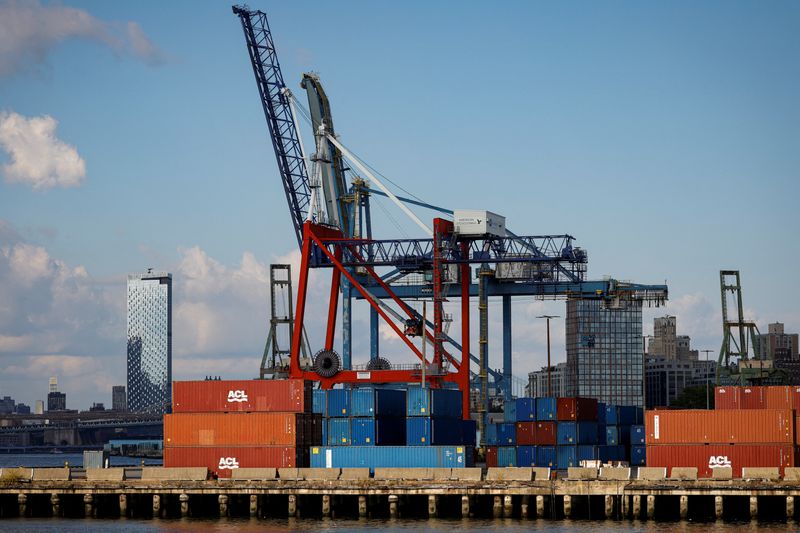US core capital goods orders rise in August
2024.09.26 11:10
WASHINGTON (Reuters) – New orders for key U.S.-manufactured capital goods unexpectedly rose in August, though business spending on equipment appears to have lost momentum in the third quarter.
Non-defense capital goods orders excluding aircraft, a closely watched proxy for business spending plans, increased 0.2% last month after a downwardly revised 0.2% drop in July, the Commerce Department’s Census Bureau said on Thursday.
Economists polled by Reuters had forecast these so-called core capital goods orders would be unchanged after a previously
reported 0.1% dip in July. Core capital goods orders gained 0.3% year-on-year in August.
Higher borrowing costs have been a constraint on business investment, though a loosening of financial conditions as the Federal Reserve readied to cut interest rates boosted spending on equipment in the second quarter.
The U.S. central bank last week cut its overnight benchmark interest rate by 50 basis points to the 4.75%-5.00% range, the first reduction in borrowing costs since 2020. The Fed hiked rates by 525 basis points in 2022 and 2023.
Core capital goods shipments edged up 0.1% after falling 0.4% in July. Non-defense capital goods orders dropped 1.3%. They soared 42.1% in July.
Shipments of these goods fell 1.6% after rising 4.8% in July. Shipments go into the calculation of the business spending on equipment component in the gross domestic product report.
Orders for durable goods, items ranging from toasters to aircraft meant to last three years or more, were unchanged last month after surging 9.9% in July.
There were increases in orders of electrical equipment, appliances and components, machinery, fabricated metal products and well as computers and electronic products.
Orders for transportation equipment fell 0.8% after soaring 34.6% in July. Motor vehicles and parts orders rose 0.2%.

Commercial aircraft orders and parts fell 7.5%. Boeing (NYSE:) reported on its website that it had received 22 orders last month, down from 72 in July. The outlook for aircraft orders is dim as the world’s largest aerospace company deals with a range of issues, including a crippling strike.
The head of the Federal Aviation Administration told a U.S. Senate panel on Wednesday that Boeing must address a series of safety issues before he will let them boost 737 MAX production.








